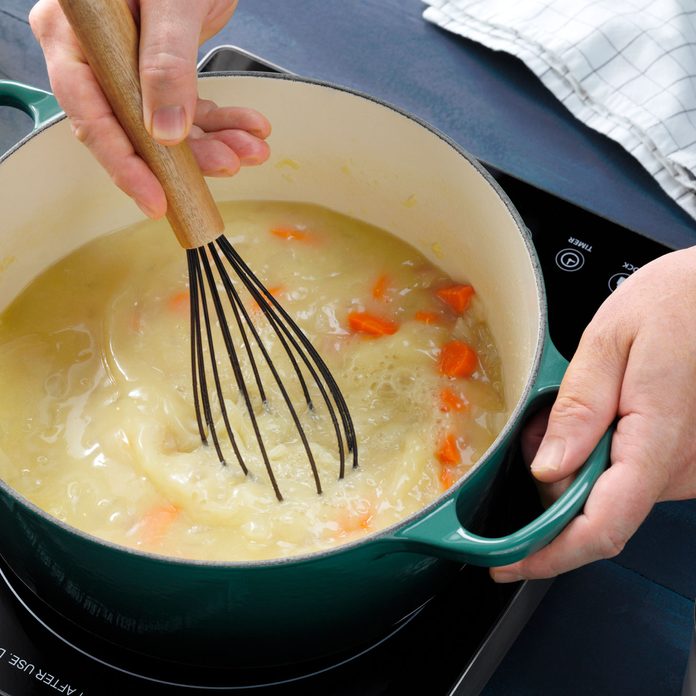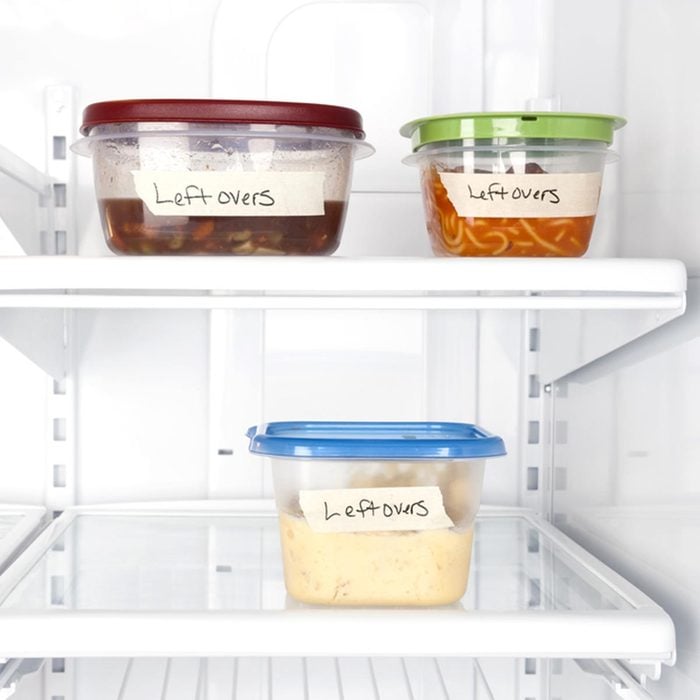Grandma knew a thing or two about how to make soup. We'll show you how to recreate her best work.
11 of Grandma’s Best-Kept Soup Secrets

Use Homemade Broth
You don’t have to rely on a carton of store-bought stock or broth. If you’re new to cooking, this might sound intimidating, but it’s easier than you think to whip up a batch of homemade broth. You can use the slow cooker or a pressure cooker if you like and freeze your broth in quart-sized containers. When you’re ready to make soup, thaw it and you’re ready to go!

Use Fresh Herbs
It’s amazing what a pinch of parsley, sage, rosemary or thyme can do to add an extra layer of “oomph” to an otherwise flat soup. Just make sure to add them at the end so they don’t lose their flavor. Get more tips for cooking with herbs with our ultimate guide to fresh herbs.

Know when to use fresh vegetables
Veggies are an easy (and tasty!) way to make your soup a little healthier. But, there’s a time and a place for fresh vegetables. When they’re in season or purchased at the farmer’s market, they’ll definitely shine in your soup. But sometimes, frozen is better. Your soup might be more flavorful and nutritious if you use frozen vegetables that are packed at the peak of freshness.

Cook in Layers
Don’t add everything at once. Layer your ingredients as you cook to build flavor! Brown your meat first so you can sweat your onions in the fond, the gooey brown goodness that sticks to your pan. Add celery and carrots next and let them soften a bit before deglazing, adding your broth and simmering the soup.

Don’t Add All the Veggies at Once
If you’ve ever made a sheet pan dinner, you know that vegetables don’t always cook at the same rate. It helps if you cut them into uniform sizes, but a potato will take much longer to cook than tender spinach. Know your cook times and add the hearty vegetables earlier than delicate ones.

Substitutes Are OK
If you’re missing a key ingredient for soup, there’s almost always a way to work around it. Take our substitute for cream of chicken soup for example. With just broth, butter, flour, milk and spices you have yourself an even better version than what you’d find in a can. If you need a broth substitute, try bouillon or learning how to make broth from scratch. All out of boullion?

Add a Parmesan rind
This is the easiest way to make a rich-tasting soup without any extra effort. Save your Parmesan rinds in an air-tight bag in the fridge. When you make soup, toss a whole rind into the pot with the broth. It’s easy to fish out later and infuses the broth with incredible flavor.

Finish with a Bit of Acid
This tip doesn’t apply to cream-based soups (which would curdle), but any brothy soup will benefit from a splash of fresh lemon juice or vinegar at the end. It will bring out all the other flavors, really zesting up the entire eating experience.

Garnish
Soup is more than what simmers away in the pot. What goes on top is important, too! Complement the flavors of your soup with a swirl of yogurt, freshly chopped herbs, salty cheese or crunchy, toasted pepitas. It will go from tasting okay to fantastic in a heartbeat.

Make Soup in Advance
You won’t always have time for this, but soup really does tastes better the next day. If you really want your soup to shine, make it ahead of time. Resting your soup allows proteins to break down, release amino acids and develop a deeper meatiness, according to the Institute of Food Technologies. Plus, as the ingredients continue to sit together, their flavors will meld together, too. See all our recipes for Grandma’s best soups.

Store Leftovers Correctly
While letting your soup sit develops its flavor, you don’t want to let it hang out in your fridge forever. Store leftover soup in an air-tight container in the fridge for up to 4 days. If you want to stretch your leftovers even farther, soup can be kept in the freezer for about 3 months.
But be careful: Bot every soup is good for freezing. Cream-based soups can break apart or become grainy when thawed. Broth-based or pureed vegetable soups are among the best soups that freeze well.
Here’s everything you need to know about freezing soup.

















